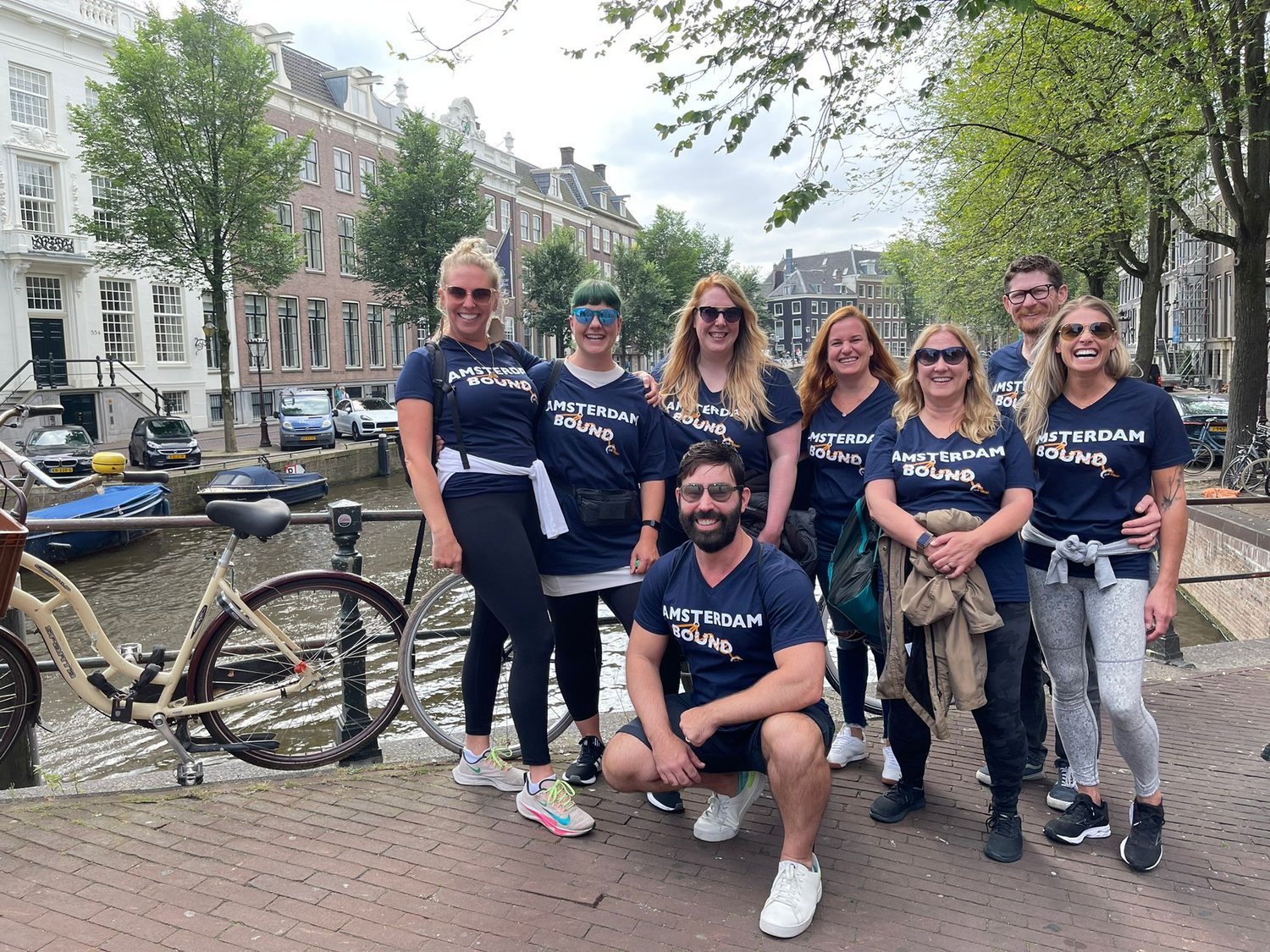Image credit: Photo / Getty
Red-light Districts are defined as sections of urban areas designated for legal prostitution and sex-related businesses such as sex shops, strip clubs, adult theaters, and brothels. The color red has always held a relationship to sex and sexuality, and the red in red-light districts means “open for business.” While there are numerous red-light districts in the world—including Bui Vien Street in Ho Chi Minh City, Vietnam; Pigalle in Paris, France; Reeperbahn in Hamburg, Germany; and Kabukichō in Shinjuku, Tokyo, Japan—there is one red-light district that seems to surpass those mentioned in terms of popularity. Perhaps when you think of the term “red-light district,” a mental image of a European-style street painted in fluorescent red signs pops up. This area is known as De Wallen in Amsterdam.
LOCATION of Red-light Districts
As one of three red-light districts in Amsterdam, De Wallen is located in the heart of the city, just about 10 minutes walking from the Netherlands busiest station, Centraal Station. The area is bordered by several streets, though the main streets that compose De Wallen are Warmoesstraat, Oudezijds Voorburgwal, Oudezijds Achterburgwal and Zeedijk. Surrounding the area are canals, and the streets are littered with cafes, bars, shops, and brothels. If you’re looking to get to the middle of De Warren street, locals say the address “ Oudezijds Achterburgwal 39-A” takes you there. Though De Wallen does house a plethora of adult-related stores and shops, it is also home to a lot erotic museums and historical landmarks. For example, Red Light Secrets is a brothel-turned-museum that allows tourists and guests to learn more about the profession, while Hash Marihuana & Hemp Museum invites guests to learn about the history of cannabis. (Speaking of! A lot of the ‘coffeeshops’ in De Wallen sell cannabis-infused drinks, so if you’re thinking of visiting De Wallen but do not want cannabis drinks, be on the lookout for a “cafe” instead.)
HISTORY of Red-light Districts
The Netherlands has a rich and thick history in general, and the history of De Wallen is as lucrative as it is interesting. The middle ages painted Amsterdam as a harbor hub, and during the 1300s, women would sneak off at night and meet sailors at the port and other venues to have sex for money. The 14th and 15th centuries saw many women widowed without the option to remarry (as stated by the church), leaving them without a source of income. When tourists would visit, women were eager to offer themselves as entertainment for the right price. Police would try and put a stop to this, as well as penalize women working in brothels; however in 2000, the Dutch government legalized prostitution. Brothels were recognized as legal businesses and allowed prostitutes to be legal sex workers, renting out window spaces from licensed brothels.
WHAT’S THERE TO OFFER?
While De Wallen is home to roughly 200 brothels, it is also home to several bars, restaurants, sex shops, and erotic/live shows that help mark the neighborhood as a staple for sex tourism. Sex museums are all the rave, with multiple in the area such as Red Light Secrets (previously mentioned), sexmuseum Amsterdam, and Erotic Museum. There is absolutely no recording of the sex workers in the windows, however the opportunity to experience their services is an option. But not everything has to be about sex (unfortunately). There are many other sights to see, Allard Pierson, an archaeology museum, and The Oude Kerk, Amsterdam’s oldest building.
PLAN 1012
Known as the gentrification of De Wallen, Project 1012’s (named after the area’s postal code) main goals for the De Wallen area were aimed at: “(a) dismantling criminal infrastructure, (b) reducing concentration of criminogenic and low quality enterprises, and (c) realising a qualitative and diverse entry area.”
In 2007, the red-light district saw a beautification of sorts, opting to trade in the signature red-lights for luxurious flower boutiques and the closure of over 100 windows, in which the female sex workers promote themselves. Much like what happened with the sex shops located in Times Square during the 70s and 80s, Plan 1012 enforces a zoning policy under the guise of better safety, but in reality is for the benefit of real estate value. The government forced brothel and coffee shop owners to sell their leases under this new plan and while they received a payout, those who worked in the shops (sex workers and prostitutes) did not see any part of it. The plan seemed counterintuitive as it was aimed at stopping crime against these workers but instead displaced them in an area they were succeeding in.
To add more fuel to the fire, it has been reported that as of 2023, more regulations have been set into place for the De Wallen area. Starting with marijuana use, people are banned from smoking in the street. Sex workers are no longer allowed to work past 3 a.m, and bars have a new bedtime, closing at 2 a.m with a last entry at 1 a.m. The push to relocate legal prostitution to other areas is still being pushed, and the reactions from sex workers remain negative. Most sex workers feel like they are being pushed out in an attempt to forget them, however government officials argue that the red-light districts have become such a staple it’s hard to ever truly drive that image out. The tension between sex workers and the government is a tale as old as time, and the legitimacy of the profession is always called into question when reputable ways of making money (like real estate) are more desirable than sex.
Despite the legal issues going on behind the scenes in De Wallen, the area still holds a significant spot as part of the allure to visit Amsterdam, and to the Netherlands. Red-light districts are important sexual monuments that share the story of sex, sexuality, and sex work. These areas celebrate bodies as a commodity and space for sexual exploration. Even though De Wallen is recognized as the most famous red-light district in the world, who’s to say we can’t create one in our bedroom right now?
Written by Destiny Maldonado
Want to know more about sexuality and culture around the world? Study abroad with SHA! Check out the “events” tab on the SHA website for more information on upcoming events!
Transform your passion for sexuality into a career! Click now to take the 'Shape the Future of Sexuality: Which Certification Is Your Calling?' quiz and uncover the SHA certification that will launch your professional journey.
Ready to make a difference in the world of sexuality education? Discover which SHA certification program fits your passion and expertise. Take our quiz, 'Shape the Future of Sexuality: Which Certification Is Your Calling?' and start your journey to impact.







